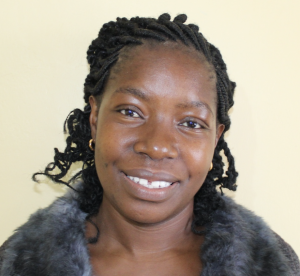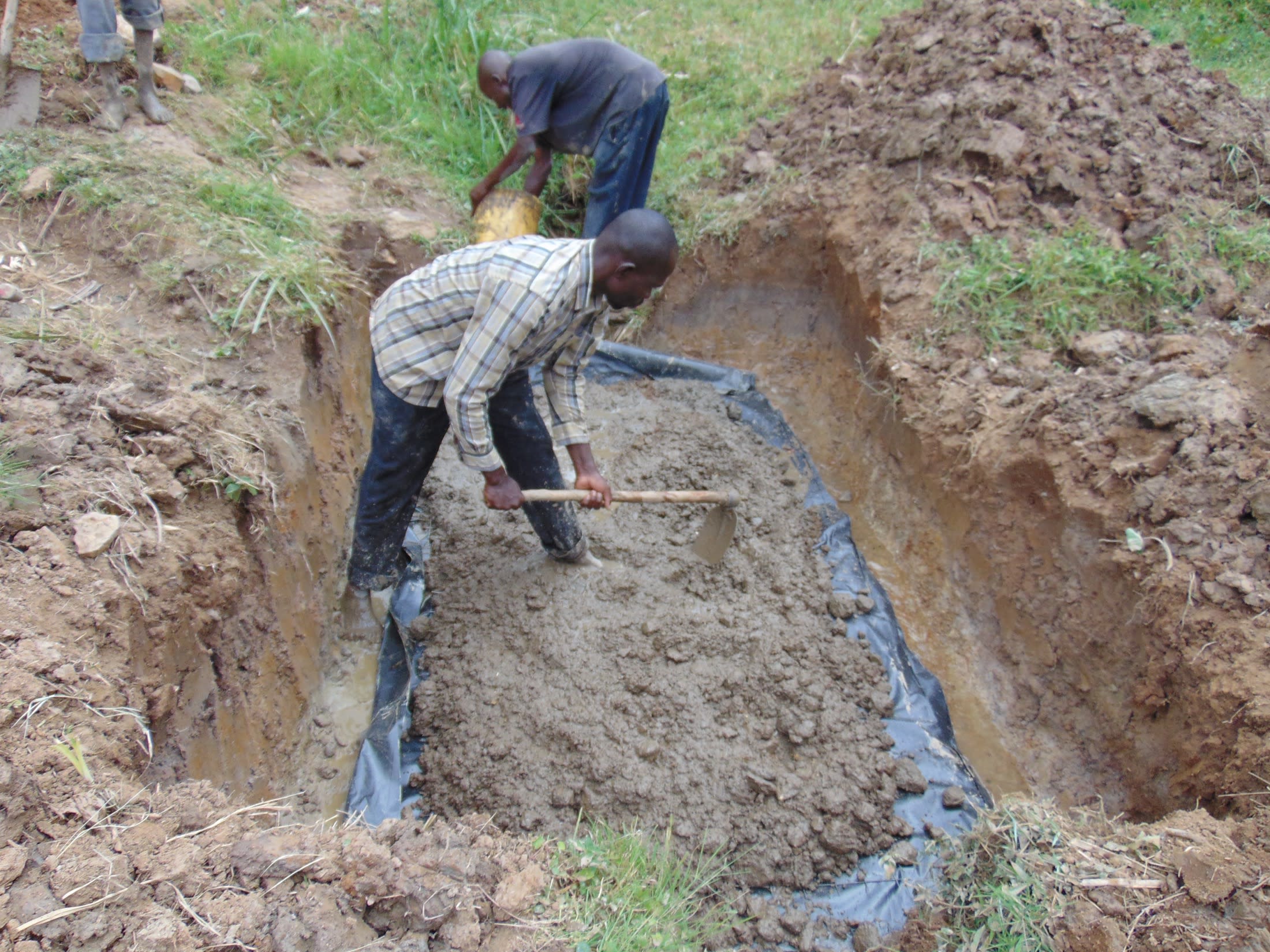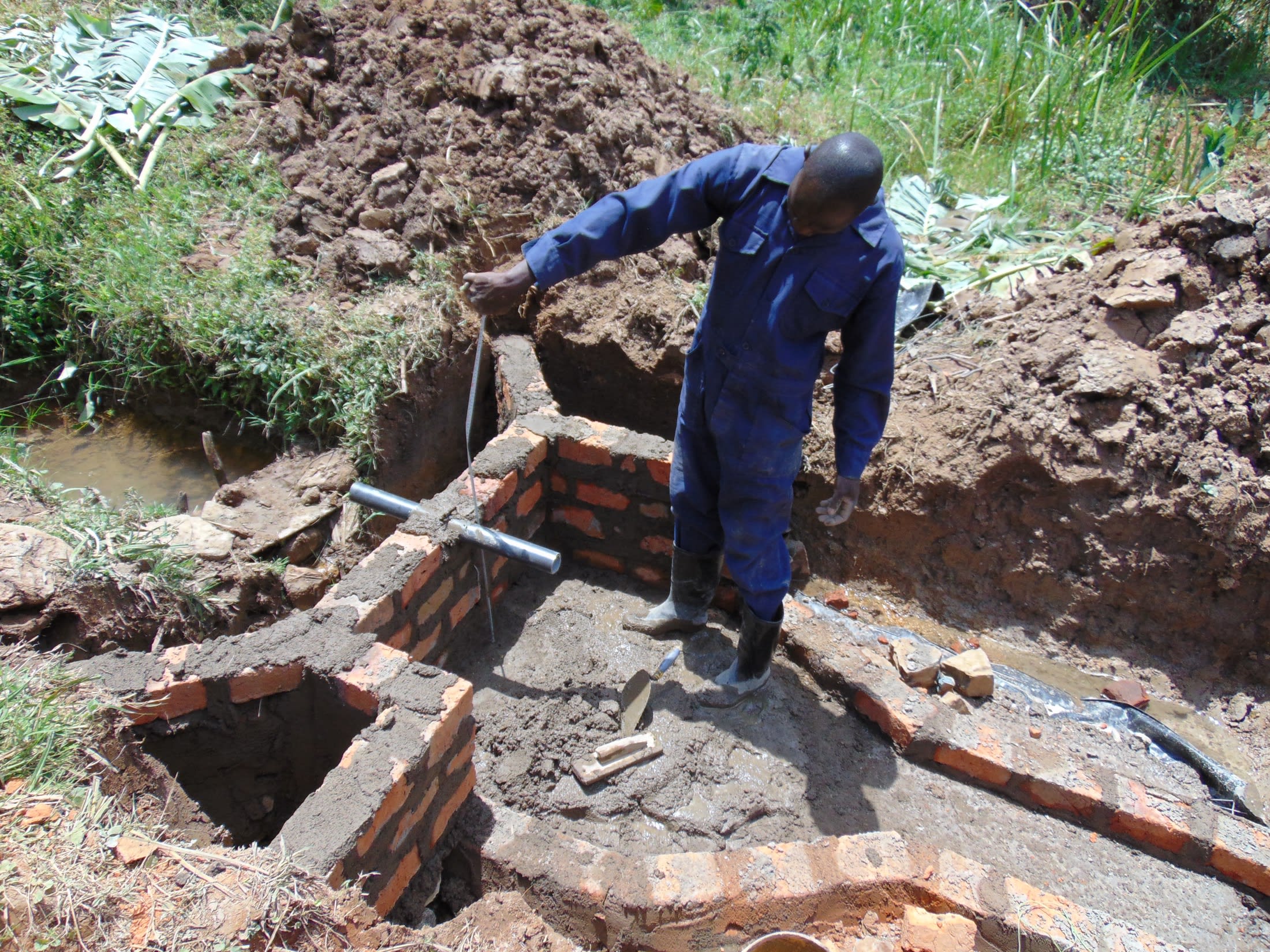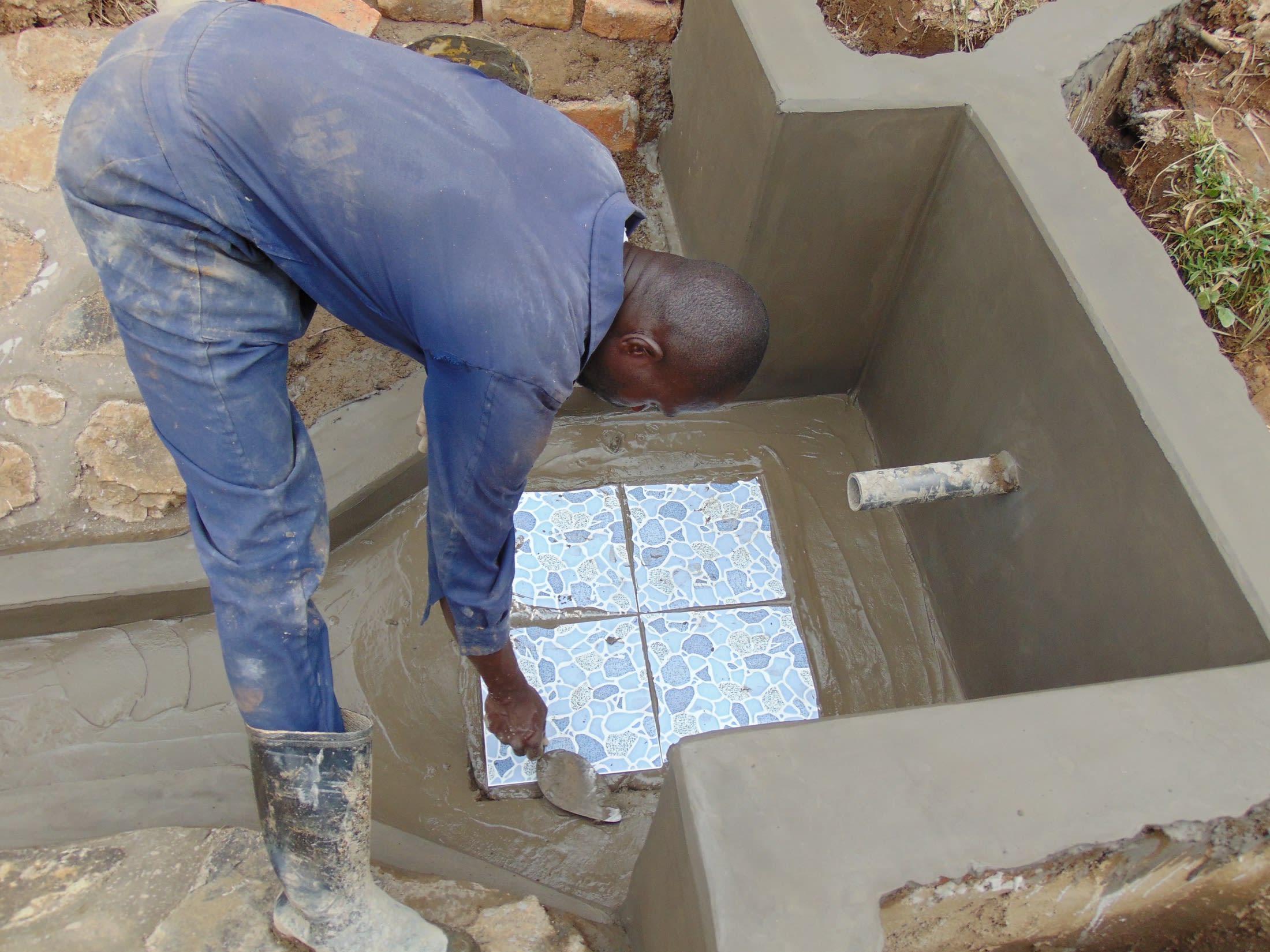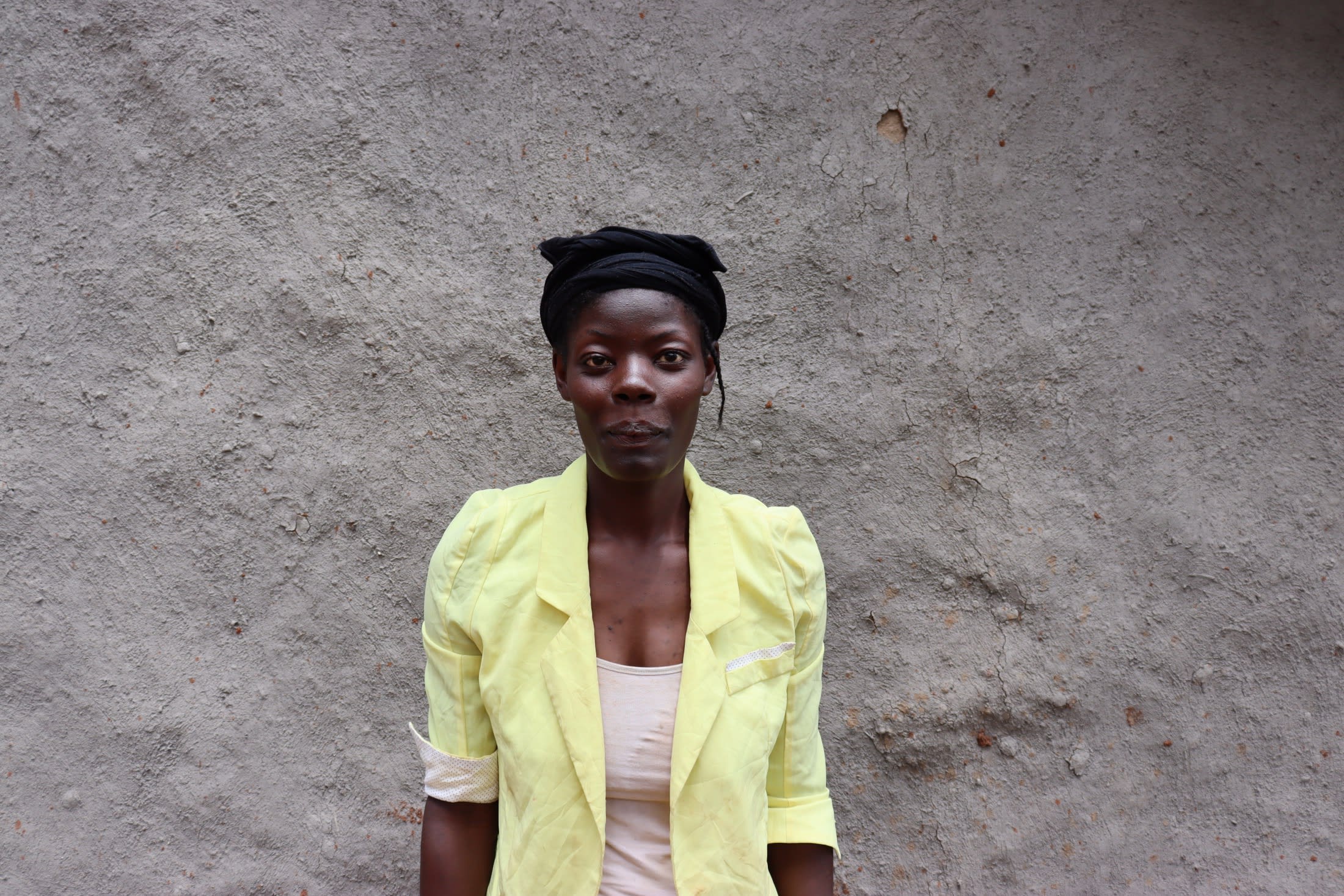The 170 members of Muting'ong'o Community work and live together, producing the most sugarcane in western Kenya from their farms. The area is densely populated, with green vegetation as a crown, making it quiet and cool at the same time. But Muting'ong'o's success as a farming region has only been achieved despite not having a reliable source of clean and safe water.
Chivuyi Spring, where the community members come to collect water every day, is adjacent to one of these farms.

The water at the source is contaminated by the fertilizer used. Animals and passersby can contaminate the water easily.

"Fetching water from the spring during rainy season is not good, because all the dirty water is washed directly to the spring, making the water more dirty," said Jentrix Chivuyi, a community member drinking from the spring above.
Efforts by some community members to police the spring (preventing people from stepping in the spring, playing around it, or using unclean containers to scoop it) have only resulted in quarreling amongst the people who pride themselves on their unity on the field and outside it.
The community members work together as one and live together as one family. Especially during sugarcane harvesting. All the conflicts are set aside and they work together as one family.
But water quality is far from this spring's only problem. The still water can sometimes be a breeding ground for mosquitoes. And the terrain around the spring isn't safe.

"I fear fetching water at the spring because it's risky," said Emmanuel Sammy, a community member and farmer shown collecting water above. "Falling inside is easy because the surroundings are sometimes slippery."
The water is also dangerous for children, who are often tasked with fetching water for their parents. Residents told our field officers that youngsters have fallen into the spring while collecting water in the past. And once the children drink the water, they get sick.
"[Children] cough a lot after drinking the water from the source, especially during the rainy season," Jentrix said.
What We Can Do:
Spring Protection
Protecting the spring will help provide access to cleaner and safer water and reduce the time people have to spend to fetch it. Construction will keep surface runoff and other contaminants out of the water. With the community’s high involvement in the process, there should be a good sense of responsibility and ownership for the new clean water source.
Fetching water is a task predominantly carried out by women and young girls. Protecting the spring and offering training and support will, therefore, help empower the female members of the community by freeing up more of their time and energy to engage and invest in income-generating activities and their education.
Training on Health, Hygiene, COVID-19, and More
To hold trainings during the pandemic, we work closely with both community leaders and the local government to approve small groups to attend training. We ask community leaders to invite a select yet representative group of people to attend training who will then act as ambassadors to the rest of the community to share what they learn. We also communicate our expectations of physical distancing and wearing masks for all who choose to attend.
The training will focus on improved hygiene, health, and sanitation habits in this community. We will also have a dedicated session on COVID-19 symptoms, transmission routes, and prevention best practices.
With the community’s input, we will identify key leverage points where they can alter their practices at the personal, household, and community levels to affect change. This training will help to ensure participants have the knowledge they need about healthy practices and their importance to make the most of their water point as soon as water is flowing.
Our team of facilitators will use a variety of methods to train community members. Some of these methods include participatory hygiene and sanitation transformation, asset-based community development, group discussions, handouts, and demonstrations at the spring.
One of the most important issues we plan to cover is the handling, storage, and treatment of water. Having a clean water source will be extremely helpful, but it is useless if water gets contaminated by the time it is consumed. We and the community strongly believe that all of these components will work together to improve living standards here, which will help to unlock the potential for these community members to live better, healthier lives.
We will then conduct a small series of follow-up trainings before transitioning to our regularly scheduled support visits throughout the year.
Training will result in the formation of a water user committee, elected by their peers, that will oversee the operations and maintenance of the spring. The committee will enforce proper behavior around the spring and delegate tasks that will help preserve the site, such as building a fence and digging proper drainage channels. The fence will keep out destructive animals and unwanted waste, and the drainage will keep the area’s mosquito population at a minimum.

 Protected Spring
Protected Spring
 Rehabilitation Project
Rehabilitation Project










